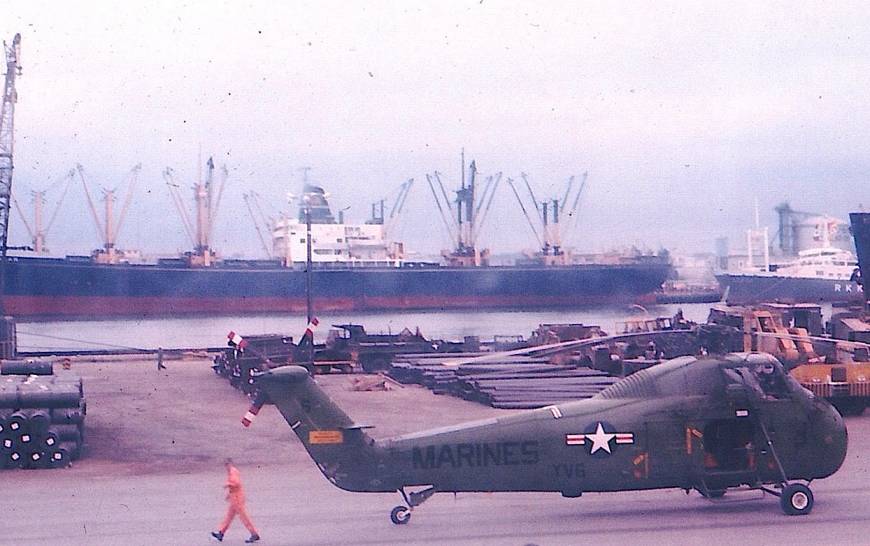
The final decision favored the victim last October 2013 in spite of the repeated claim of Pentagon that the chemical was not never in Okinawa.
In the ruling of the Board of Veterans’ Appeals (BVA), the unnamed marine said that he was exposed to the Agent Orange while moving it in barrels and rubber bladders between U.S. military ports at Naha, and navy installation on the west coast at White Beach and a warehouse on Kadena Air Base. He was also claimed to have used the chemical in the North Training Area in the Yanbaru jungles to keep the area clear from foliage and prevent the possibility of forest fires.
The marine was said to have identified the chemical because of the orange stripe markings painted around the middle of the barrels used to distinguish Agent Orange from other barrels.
Originally, the application for compensation of the retired service member was first rejected in 2004. After the appeal made by the marine, the judge, Mary Ellen Larkin, ruled in his favor and last October, he was granted the claim.
“While neither the service department nor DOD confirms the presence of Agent Orange on Okinawa during 1967 and 1968, the veteran offers a highly credible, consistent account that he was directly exposed thereto during those years while performing his assigned military duties,” Judge Larkin stated in her ruling.
The veterans who reportedly made successful claims include a former marine who was stationed on the main island i the early 1960s and a retired army truck driver who came into contact with the chemical while driving and transporting Agent Orange from the ports of Okinawa to Kadena Air Base between 1965 and 1966.
The most recent case is said to be the first case won by a veteran fighting for compensation ever since the Pentagon released a 29-page report claiming that Agent Orange had not been present in the island. The report issued last February 2013 was written by former USAF Col. Alvin Young. It was criticized by experts for the f`ailure of the U.S. government to order environmental tests and interviews of any veteran claiming exposure of the Agent Orange in Okinawa.
U.S. Defense Department spokesperson Mark Wright said that Pentagon is confident that the report is credible.
“The research showed that there are no source documents that validate the claims that Herbicide Orange was shipped to or through, unloaded, stored, used or buried on Okinawa,” Wright said.
Genevieve Billia, VA public affairs specialist, added, “This BVA decision was case-specific, giving the benefit of doubt to the veteran claimant, and has no impact on Dr. Young’s report.”
Billia further stated that the ruling does not set a precedence for other cases and the pay-out does not necessarily equate to the possibility of granting more compensations.
However, Don Schneider, a former military veterinary technician who also claims to have been exposed to Agent Orange while in Okinawa in 1968 said that the decision of the latest case makes a lot of difference.
“This will hearten and encourage other veterans to resubmit their claims for consideration. The VA has continued to ignore other valid claims but I think this decision will eventually prove to be as meaningful for the people of Okinawa as it is for the veterans who served on the island during the Vietnam War era,” Schneider said.
During the Vietnam War, Kadena Air Base was one of the primary base used by Pentagon during the Vietnam War. It was also the same base cited in the October ruling as the storage site of the Agent Orange. A U.S. Army report released in 1971 stated that a herbicide was stored at Kadena Air Base. The report further stated that C-123 aircrafts were used to spray Agent Orange over Vietnam. The planes were also sent back to the same air base for maintenance.
Only recently, the installation came under attack raising public health concerns following the discovery of 83 barrels on a strip of land that was formerly part of Kadena Air Base. Some of the barrels contain markings that associate to the Dow Chemical Co., which is the maker of an ingredient of Agent Orange. Tests were conducted on the barrels and 22 were found to contain high levels of herbicide and dioxin. These are the primary ingredients of Agent Orange leading some scientist to argue of the possibility that the defoliant was indeed in Okinawa. The test results of the other barrels are set to be released to the public in mid-April.
Meanwhile, Kadena Air BAse officials released a report last month that two Defense Department schools adjacent to the dump site were safe after the environmental tests on the surface soil of the school ground revealed no trace of harmful chemicals.
